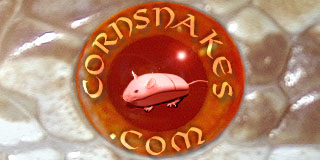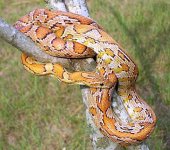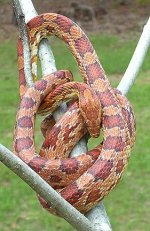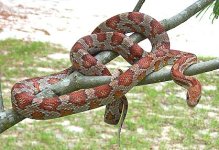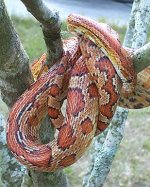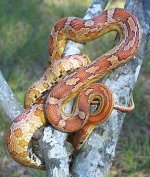Jaded_Heart
Prymal Reptiles
as defined by the dictionaries:
dictionary.reference.com
domestic animal
noun
an animal that has been tamed and kept by humans as a work animal, food source, or pet, especially a member of those species that have, through selective breeding, become notably different from their wild ancestors.
http://www.merriam-webster.com
Definition of DOMESTIC ANIMAL
any of various animals domesticated so as to live and breed in a tame condition
Wikipedia
Some exerts in the article DOMESTICATION as follows:
OKAY NOW, to the point, given these researched definitions of the term Domestic... is it fair to venture as far as to say that the Corn Snake could be deemed... Domestic?
dictionary.reference.com
domestic animal
noun
an animal that has been tamed and kept by humans as a work animal, food source, or pet, especially a member of those species that have, through selective breeding, become notably different from their wild ancestors.
http://www.merriam-webster.com
Definition of DOMESTIC ANIMAL
any of various animals domesticated so as to live and breed in a tame condition
Wikipedia
Some exerts in the article DOMESTICATION as follows:
It differs from taming in that a change in the phenotypical expression and genotype of the animal occurs
Humans have brought these populations under their control and care for a wide range of reasons: to produce food or valuable commodities (such as wool, cotton, or silk), for help with various types of work (such as transportation, protection, and warfare), scientific research, or simply to enjoy as companions or ornaments.
OKAY NOW, to the point, given these researched definitions of the term Domestic... is it fair to venture as far as to say that the Corn Snake could be deemed... Domestic?
